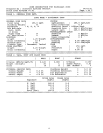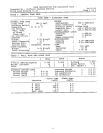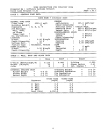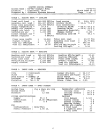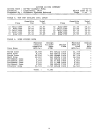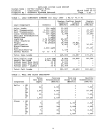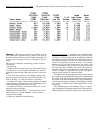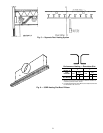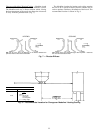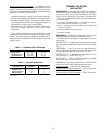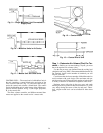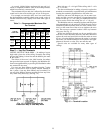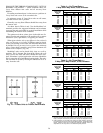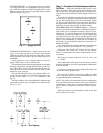
Moduline Selection (Analysis of Data) — The printout shown below presents an analysis of the preceding data.
Heating — Heat must be provided in a building to offset
losses through the perimeter walls, windows, and roof. In
the interior spaces the heat gain from lights and people will
in many cases be enough to cause a cooling load even in
winter.
The two most commonly used heating systems are these:
• Baseboard
• Overhead air
Baseboard has been used historically in the North because
it is effective in overcoming the downdraft from windows,
particularly with the large single pane windows used in the
past.
Now, with improvements in the building thermal enve-
lope due to better materials and construction methods, over-
head air heating is a viable and attractive alternative.
Overhead air heating, when properly applied, can handle
all requirements except the severe cases in which the wall U
values and temperature differences are large.
Overhead air heating is the method which will be con-
sidered for these procedures.
OVERHEAD AIR HEATING — Two basic forms of over-
head heating are used with Moduline cooling systems:
• Separate duct heating
• Changeover Moduline heating/cooling
Separate Duct Heating — Asimple type of overhead air heat-
ing system for use with a Moduline cooling system consists
of a series of ceiling outlets, placed around the perimeter of
the building close to the outside wall, which blow warm air
outward and/or downward to floor level. The outlets are con-
nected by a simple duct system to an electric (or hot water)
heating-only fan coil unit located above the ceiling. (See
Fig. 5.) Aminimum of one fan coil unit per exposure is used
for each story of the building. The fan coil unit draws air
from the ceiling plenum and distributes it to the building pe-
rimeter by means of a separate duct system. This type of
heating system operates at constant volume.
The separate duct heating approach allows heat to blanket
the outside wall, eliminating the transmission of heat through
the outside wall and permits the Moduline cooling units to
be located in the best arrangement for cooling distribution.
Control interlock between separate system heating and Modu-
line cooling is outlined in the Control Applications section,
on page 44.
The 35BD heating slot boot diffuser (Fig. 6) is specifi-
cally designed for this heating approach and will provide ex-
cellent distribution of the hot air necessary to offset the load.
20



